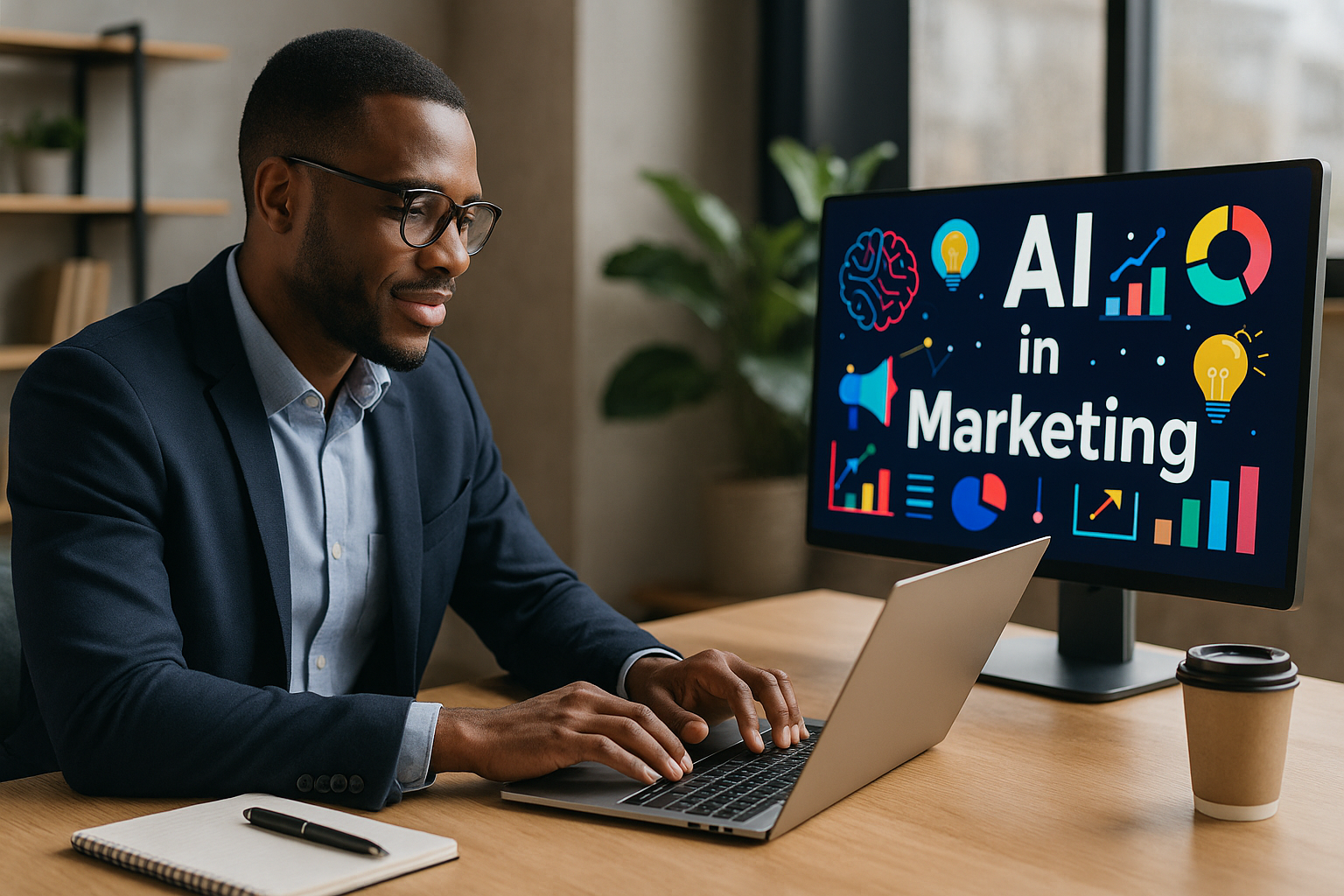Artificial Intelligence (AI) has become a powerful ally in the world of marketing — helping businesses of all sizes work smarter, not harder. From personalized recommendations to predictive analytics and automated content creation, AI is revolutionizing how brands connect with their audiences.
If you’re new to AI or just starting to explore its applications in marketing, this beginner-friendly guide will walk you through the basics, the tools, and the steps to start using AI effectively.
What Is AI in Marketing?
AI in marketing refers to the use of machine learning, natural language processing (NLP), data analysis, and automation tools to:
- Understand customer behavior
- Predict future trends
- Personalize user experiences
- Automate repetitive marketing tasks
Instead of guessing what your audience wants, AI helps you make data-driven decisions that boost engagement and ROI.
Benefits of Using AI in Marketing
- Improved targeting: AI can segment audiences and personalize content in real time.
- Increased efficiency: Repetitive tasks like email scheduling and ad optimization can be automated.
- Enhanced customer experience: Chatbots and smart recommendations improve user satisfaction.
- Deeper insights: AI tools analyze huge datasets quickly and extract valuable patterns.
- Better conversion rates: When you reach the right person with the right message at the right time, results improve.
Common AI Applications in Marketing
1. Email Marketing Automation
AI tools like Mailchimp or ActiveCampaign can:
- Personalize subject lines and content based on user behavior
- Optimize send times for higher open rates
- Automate drip campaigns based on actions (e.g., cart abandonment)
2. Content Generation
AI writing assistants like ChatGPT or Jasper can:
- Create blog posts, social media captions, and ad copy
- Rewrite content for different tones or platforms
- Generate product descriptions at scale
3. Customer Segmentation
Platforms like HubSpot or Salesforce use AI to:
- Segment users by behavior, interests, and purchase history
- Predict future buying patterns
- Personalize offers for different segments
4. Ad Targeting and Optimization
AI algorithms used by Facebook Ads, Google Ads, and TikTok Ads can:
- Automatically identify high-performing audiences
- A/B test headlines, images, and calls-to-action
- Optimize bids in real time for better ROI
5. Chatbots and Virtual Assistants
Tools like Drift, Intercom, or ManyChat allow businesses to:
- Automate customer support 24/7
- Qualify leads via conversation flows
- Provide instant responses to common questions
6. Predictive Analytics
With predictive AI, you can:
- Anticipate when customers are likely to convert
- Recommend upsell and cross-sell offers
- Predict churn and trigger retention campaigns
Best AI Tools for Beginner Marketers
Here are some beginner-friendly tools that require little to no coding or technical expertise:
- Jasper (copywriting)
- Surfer SEO (content optimization)
- Canva AI (design assistance)
- Lumen5 (video creation)
- Tidio (chatbot builder)
- Pencil (AI-powered ad creative)
Most of these platforms offer free trials, templates, and tutorials.
How to Start Using AI in Your Marketing
Step 1: Define Your Goal
Do you want to:
- Save time?
- Improve lead quality?
- Increase conversions?
Start with one clear objective.
Step 2: Choose the Right Tool
Select an AI-powered platform based on your marketing needs — content, email, customer service, or ads.
Step 3: Test and Learn
Start with a small campaign:
- Run A/B tests
- Monitor performance
- Adjust based on results
AI tools often improve over time as they collect more data.
Step 4: Combine AI with Human Creativity
AI handles the heavy lifting, but your brand’s voice, empathy, and originality should still come from you. Use AI as a collaborator, not a replacement.
Step 5: Keep Learning
The AI marketing landscape is constantly evolving. Stay informed with resources like:
- Marketing AI Institute
- HubSpot Blog
- Google Digital Garage
What AI Can’t Do (Yet)
Even with all its power, AI still has limitations:
- It can’t think strategically like a human.
- It can’t understand your brand voice unless you train it.
- It lacks empathy and emotional nuance in customer interactions.
- It needs human oversight to avoid biased or inappropriate content.
So, always review, refine, and humanize anything AI produces before publishing.
Final Thoughts: A Smart Start to Smarter Marketing
You don’t need to be a data scientist to leverage the power of AI. With today’s user-friendly tools, marketers at any level can streamline their workflows, enhance personalization, and drive better results.
Start small, be curious, and embrace AI as a supportive partner. With the right strategy, AI will not only save you time — it will help you deliver more impactful marketing that truly resonates with your audience.
